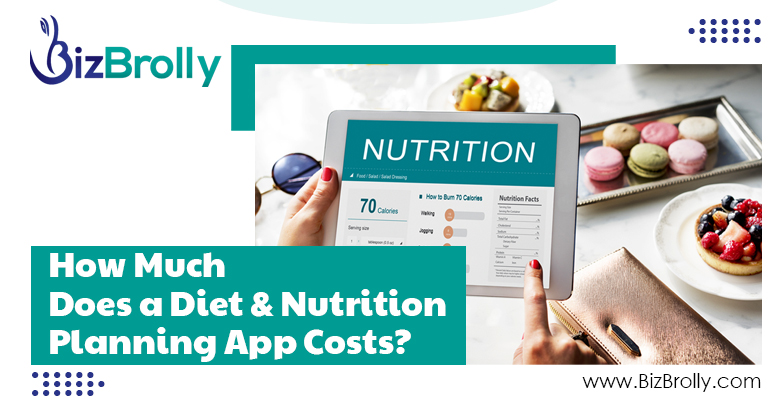
Healthy eating and adequate calorie consumption are the primary outcomes of a sustainable change in behavior. Monitoring the benefits of nutrition, including food and protein intake, as well as physical activity, has now become the norm for health-conscious people. With the increase in health awareness, the demand for applications for nutrition and diet has risen to a new height. Let’s discuss the nutrition and diet app development costs and ways entrepreneurs can benefit from this.
Nutrition and diet apps allow users to track their nutrition consumption as well as the amount of calories they consume and the type of food they consume, & many more. These apps have gained widespread acceptance among health professionals, and the most recent market data show that their popularity is growing.
Here is the summary version of the most recent market trends and data for the app for diet and nutrition, according to numerous sources:
The demand for diet and nutrition apps is so high that it have become one of the key players in the US fitness app market. The average diet and nutrition app costs between $25,000 and $200,000, depending on the features and complexity.
We strongly recommend that you define your audience’s needs first in order to create an enduring business using the diet and nutrition app and then monetize it. Additionally, it is important to take into consideration the most recent market size of the app for diet and nutrition. An app with a lot of features that provides personalization for users can aid you in navigating the competitive market.
The cost of developing a diet and nutrition app depends on the target audience.
The three main target audiences are:
Users usually record their daily eating habits and track weight gain or loss. Fitness centers use apps to help clients keep track of their diet and nutrition. Nutritionists use apps to help their patients understand their food choices and manage their calories efficiently. The cost of development for nutritionists’ apps is determined by the live chat option to stay in touch with clients.
When we create a mobile app, whether it is a complete application or a minimum viable product (MVP) to test the market, we focus on both the user and admin sides of the application. The cost of the mobile app is determined by its features and overall complexity.
Similar to other apps with social media integration, the login stage is helpful when it comes to diet apps. Beyond that, the questionnaire can aid users in creating a user account.
A few of the things we advise our clients include are:
Although it is beneficial to have an integrated QR code in the application to assist users in scanning and getting the calories of the item, it could cost a lot. What we would recommend in the MVP phase is to let users manually input the information about calories.
There should be a progression graph within the application that displays how far they’ve progressed in their diet journey, and whether they’re on the right track to achieve the goals they set out to accomplish.
You must provide push notifications within the application to notify users that their progress graphs are ready or to use it as a way to keep them interested in the application , and eventually become regular users.
The app should be integrated with social media so that users can share their experiences with their friends and networks.
The main purpose of a nutritional app is to track your food intake throughout the day, as well as the activities you engage in to stay healthy. Therefore, this is the next essential feature to have in the diet app.
The app must include input fields that will help users record their food intake and other activity information.
In addition to the above MVP features, there are other features that make the app stand out in the market.
It helps administrators to keep in the loop of user’s experiences within the application, as well as any challenges they may face. It also lets them solve user queries immediately.
This feature lets administrators monitor real-time data, create live dashboard reports, and more. This can assist in making business-related decisions that are strategic.
The dashboard for admins will provide an overview on the performance as well as the necessary maintenance.
The cost of creating an application in the category of diet and nutrition is contingent on the features list. Furthermore, the cost could also depend on the development company you work with. Its size, the agency and the staff working on your project, the number of hours spent and the price per hour, as well as the agency’s location, will all have an impact on the final value of your mobile application.
Simply put, the total price of the mobile application is the total number of hours required to complete each development step divided by the total number of hours.
The typical cost of creating a basic diet and nutrition application is $3,800 to $91,000. The most basic apps typically include the most basic on application is $3,800 to $91,000. The most basic apps typically include the most basic features, like the user dashboard, log creation, and a basic administrator dashboard.
However an app that is moderately complex could cost anywhere from $55,000 to $131,000. This app may be monetized and come with regular and advanced features, like integration with social media, audio/video streaming, secure payment and more.
The cost of complex applications can range between $91,000 and $211,000;The apps are based on the most recent technology, including VR, AR, and AI. The vast feature list makes it among the most sought-after applications that can provide a profitable edge to its creators.